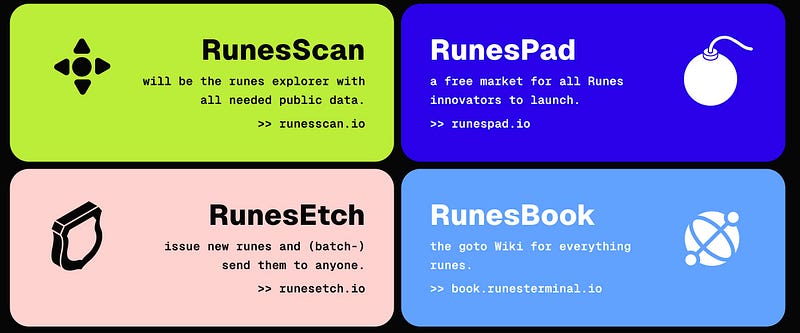Satoshi Protocol is thrilled to announce a strategic collaboration with Runes Terminal, the first-ever launchpad built specifically for the Runes Protocol, to foster innovation and growth within the BTCFi and Runes ecosystem. You’ll soon be able to participate in the Runes Launchpad using our stablecoin, $SAT!
This partnership marks a significant step forward for the growth and innovation of both ecosystems, bringing together Satoshi Protocol’s expertise in stablecoins and DeFi with Runes Terminal’s suite of developer tools and resources.
What is Runes Terminal
Runes Terminal is a comprehensive platform designed to accelerate innovation within the Runes ecosystem, and provides the infrastructure necessary for growth and development. It functions as a launchpad for innovative projects within the Bitcoin ecosystem, offering a suite of tools and services that streamline development and propel expansion.
These tools provided by Runes Terminal include:
- RunesScan: A tool that allows for deep dives into on-chain data, providing valuable insights for development.
- RunesEtcher: A user-friendly token creation tool that empowers anyone to create and manage their own Runes, even without coding experience. This eliminates a major barrier to entry and fosters a wider range of participation.
- Runespad: The platform’s launchpad, that provides a springboard for launching projects on Runes. It also connects developers with potential investors and marketing resources, helping them take their projects from concept to a thriving reality within the Runes ecosystem.
- RunesBook: A comprehensive wiki for all Runes-related information.

How This Partnership Benefits Users
This strategic partnership between Satoshi Protocol and Runes Terminal brings exciting benefits to a wide range of users within the BTCFi and Runes ecosystems.
- Stablecoin Integration: Get ready to leverage the stability and security of $SAT! Soon, you’ll be able to participate in the Runes Launchpad using our innovative stablecoin, opening a world of new opportunities within the Bitcoin ecosystem.
- Expanded User Base: This collaboration fosters a vibrant Runes ecosystem, attracting new users to the broader BTCFi space. As exciting Runes projects gain traction, you’ll have a more robust ecosystem to explore, brimming with innovative DeFi solutions built on Bitcoin.
- Stronger Bitcoin Ecosystem: We’re joining forces to empower more builders within the Bitcoin ecosystem. This collaborative effort will create new scenarios and use cases, attracting more users and liquidity, ultimately strengthening the entire Bitcoin landscape.
We are thrilled to join forces with Satoshi Protocol, a leading innovator in the Bitcoin DeFi space. The integration of Satoshi Protocol’s $SAT stablecoin into the Runes ecosystem will bring immense value to our users, expanding their DeFi options and unlocking new possibilities for financial inclusion on Bitcoin.
Runes Terminal Team
Conclusion
The partnership between Satoshi Protocol and Runes Terminal marks a pivotal moment in the evolution of Bitcoin DeFi. By combining the strengths of both platforms, this collaboration unlocks new possibilities for innovation, user growth, and financial inclusion within the Bitcoin ecosystem.
As this partnership unfolds, we can expect to see even more exciting developments and innovations emerge from the intersection of Satoshi Protocol’s expertise in DeFi and Runes Terminal’s commitment to empowering developers on Bitcoin. The future of BTCFi is bright, and this collaboration is at the forefront of shaping that future.
About Runes Terminal
Runes Terminal is a comprehensive platform that empowers developers and projects building on Runes. It offers essential tools, resources, and infrastructure, including a developer toolkit, token creation tool, and launchpad.
About Satoshi Protocol
Satoshi Protocol is a universal stablecoin protocol built for Bitcoin. It empowers users to deposit BTC as collateral and borrow $SAT stablecoin, on either Bitcoin Layer 1 or Layer 2.
Website | Web APP | Twitter | Telegram | Discord | Docs | Blog





